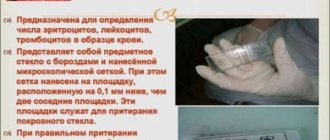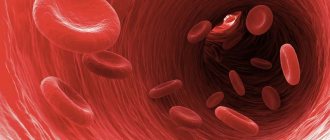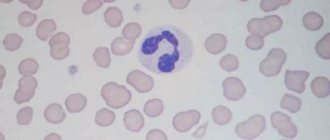The state of health is largely determined by the functioning of the cardiovascular and circulatory systems of the body. One of the significant diagnostic indicators is the level of leukocytes.
The importance of leukocytes is due to the protective function they perform in the body. When a foreign body enters the body, leukocytes absorb it, causing, depending on the size and properties of the foreign body, symptoms of the inflammatory process, marking the body’s fight against the virus. The process may also be accompanied by an increase in body temperature, redness, swelling, etc.
It is the need to carry out a protective function that largely determines the importance of controlling and maintaining the level of leukocytes in the blood. A reduced level of white blood cells indicates a reduced ability of the body to resist diseases and viruses. At the same time, an excessively high level of leukocytes should also alert you, since this may indicate the presence of a disease.
In this article, we will discuss how you can regulate your white blood cell levels through changes in your diet and what you can do to raise them.
What is leukocytopenia?
White blood cell - leukocyte
The term "penia" is translated from Greek as "poverty" or "lack." If white blood counts, which include leukocytes, begin to fall below normal values, they speak of leukocytopenia or leukopenia. The lower acceptable limit of normal leukocytes is considered to be 4.0 per 10*9/l. The important point is the number, not the percentage, of leukocytes in the peripheral blood. Much attention is paid to one of the fractions of leukocytes - neutrophils, which are also called granulocytes. It is neutrophils that perform the protective function of the body. A decrease in their level to less than 1.5x10*9/l indicates the development of agranulocytosis. The topic of low white blood cells in the blood is quite serious, since the incidence of deaths for this reason ranges from 10 to 40 percent.
Classification
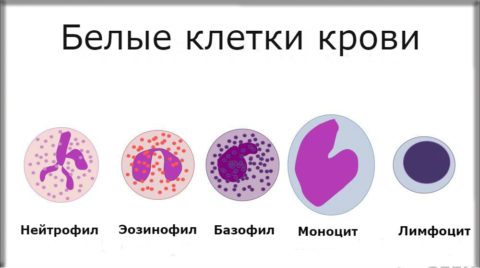
Before talking about the reasons, it is worth understanding how white blood cells can decrease.
According to the time criterion, acute and chronic leukocytopenia are distinguished:
- acute lasts up to three months;
- chronic persists for more than three months;
There are other types of leukocytopenia:
- congenital or primary (cyclic neutropenia, Kostman's disease, familial neutropenia) and acquired (secondary);
Based on quantitative criteria, leukopenia is divided into:
- relative (redistribution) - occurs as a result of the predominance of deposited leukocytes entering the blood. The latter occupy the edge (wall) position. Circulating leukocytes move freely with the bloodstream. The total number of leukocytes is within normal limits.
- absolute (decrease in the number of leukocytes). Depending on which fraction has decreased, they are distinguished: neutropenia, monocytopenia, lymphocytopenia, eosinopenia, basopenia.
Causes of leukopenia
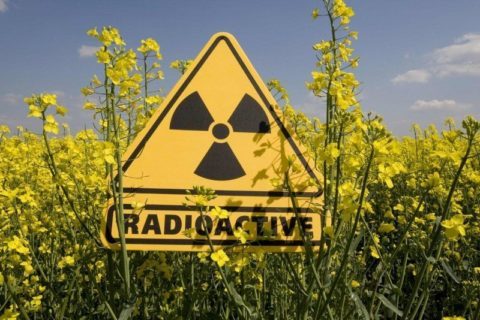
Radioactive radiation can cause leukopenia
And now about the other reasons. Let us conditionally divide leukopenia into 3 groups:
- Myelotoxic. The main reason for the decrease in white blood cells is the negative impact of certain factors on the hematopoietic sprout of the bone marrow. The causes of myelotoxic leukopenia are: radioactive radiation, toxic substances (pesticides, benzene, mercury and other heavy metals), chemotherapy drugs, ankylosing spondylitis, autoimmune diseases, etc.
- Immune. The body produces antibodies that suppress the activity of white blood cells. The causes of immune leukopenia are systemic lupus erythematosus and rheumatoid arthritis. Medicines also have an adverse effect: sulfonamides, analgin, methyluracil, chloramphenicol, biseptol, drugs for the treatment of tuberculosis, anti-gout drugs, anticonvulsants, antipsychotics, etc.
- “Safe” leukopenias. Another name for leukopenia is idiopathic, genuine. The reason for this condition cannot be determined. The protective functions of the body are not reduced, although the level of leukocytes is reduced.
- Separately, transient leukopenia, which is congenital in nature, is distinguished. The functions of leukocytes are preserved, the condition is benign. A distinctive feature of this species is the redistribution of granulocytes and agranulocytes. After 4 years, this condition disappears in children. The main reason is the penetration of maternal antibodies into the fetal bloodstream during pregnancy.
Is it possible to increase the level of leukocytes and neutrophils?
Chemotherapy drugs are toxic substances. There are indications and contraindications for their use, because they can both help the patient and cause great harm if used thoughtlessly. The only appropriate and reasonable method to increase the level of white blood cells and neutrophils is to wait.
Yes this is true.
Firstly, because each organism has its own characteristics and is not always able to recover by the time specified by the recommendations.
The intervals between cycles are optimal, but a deviation from the timing by 1-2 weeks (sometimes more, if necessary) is acceptable if there are contraindications to chemotherapy.
Secondly, any drugs that stimulate an increase in the level of leukocytes and neutrophils are dangerous because after several such stimulations, the bone marrow reserve can be depleted, and after this, recovery will take much longer and will be associated with possible complications.
If leuko- and neutropenia is constant, and the body does not recover properly even with increasing intervals between cycles, then specialized drugs are prescribed, which should be used only under the supervision of a doctor in strictly indicated situations.

Any so-called immunomodulators, immune stimulants will not bring any benefit, there will be no effect from them, because leukocytes will still decrease during chemotherapy, as it should be, but at the same time such drugs can provoke the development of undesirable reactions.
Symptoms and signs

Unreasonable increase in body temperature with leukopenia
A decrease in leukocytes in peripheral blood does not manifest itself in any way. It only absorbs all the features added to its background of pathologies. The most common symptoms and signs of leukocytopenia may include:
- increased body temperature, feeling of chills;
- increased heart rate (tachycardia);
- fatigue, weariness;
- dizziness, headaches;
- enlarged lymph nodes;
- hoarseness of voice;
- bleeding gums;
In children, poor growth and weight dynamics, frequent colds, furunculosis, and chronic periodontal inflammation can be an alarm bell.
Foods that increase white blood cell levels

An important point is to follow nutritional recommendations.
An important place in the correction of leukopenia is given to dietary nutrition. The diet should include:
- seafood (mussels, oysters, rapana, etc.);
- rabbit and turkey meat;
- meat broths (chicken, beef);
- fruits vegetables;
- fresh greens (spinach, celery root, asparagus);
- Brussels sprouts and broccoli;
- pumpkin, beets;
- legumes - peas, beans, lentils, beans, chickpeas;

Do not consume prohibited foods if you have leukopenia
It is not recommended to consume the following products:
- fatty meats;
- fatty fish;
- offal;
- butter, lard, lard;
Meals should be fractional - up to 5-6 times, the calorie content of the daily diet should preferably be increased to 3000 kcal. Carbohydrates should predominate in quantity, fats should be the least. The approximate ratio should be 50:25:15.
Important to remember! Nutrition for leukopenia cannot in any way replace taking prescribed medications, but only complements the complex therapy of leukocytopenia.
Drugs for the treatment of leukopenia

Drug treatment as the leading link in therapy
First of all, it should be noted that treatment of leukopenia should be aimed at eliminating the cause. Drugs aimed at increasing the number of leukocytes are divided into 2 groups:
- drugs that stimulate metabolic processes - leukogen, methyluracil, pentoxyl, etc.; The drugs stimulate the processes of leukopoiesis, accelerate cell renewal, and have a beneficial effect on cellular and humoral immunity;
- drugs that stimulate the leukocyte lineage of the bone marrow: lenograstim, filgrastim, sagramostim, etc.;
Therapy may include medications aimed at treating other concomitant or underlying diseases.
Treatment after a course of chemotherapy

Chemotherapy is the cause of leukopenia in a patient
A separate topic is the restoration of leukocyte levels after a course of chemotherapy. Characteristic clinical signs of leukopenia in such patients are: increased body temperature, severe weakness, increased fatigue, increased body temperature, chills, ulcerations of the oral mucosa, swelling of the oral mucosa, diarrhea. Such signs appear 1-2 weeks after a course of chemotherapy.
Patients after chemotherapy are subject to drug correction of low white blood cell levels. The most effective drugs are colon-stimulating factors. It is important to adhere to the diet mentioned above. There are a number of folk recipes.
Important to remember! In a state of leukopenia, the body's defenses are reduced. Any rash or far-fetched step by the patient can cost him a lot - unpleasant consequences and a long recovery. Therefore, there should be no place for self-medication, but consultation and agreement between doctor and patient!
How to Eat Foods to Boost White Blood Cells After Chemotherapy
Chemotherapy targets malignant tumors, slowing or stopping their growth. It has a systemic effect on the body, which harms the hematopoietic system. It is customary to restore the level of leukocytes after chemotherapy in cancer patients with diet. The amount of fluid consumed is also important. The daily norm is 2 liters.
On an empty stomach it is recommended to eat 1-2 tbsp. l. natural honey. In the first half, you must eat fruit. Breakfast should be hearty. The ideal option would be porridge with milk. For lunch, you need to eat a dish of easily digestible protein. Chicken or beef broth with vegetables is also suitable.
To properly increase white blood cells, you should eat fatty fish at least 2 times a week. Between meals, you can drink a glass of beetroot, pomegranate or carrot juice. To make the drink moderately concentrated, you should dilute it with water in a 1:1 ratio. It is also advisable to add berries, nuts and dried fruits to your diet.
The dynamics of diet therapy should be monitored under the supervision of a physician.
Attention! When choosing products, close attention should be paid to their quality and freshness.
Treatment with traditional methods

Self-medication with traditional methods is not safe
There are many traditional medicine recipes aimed at combating leukopenia. However, before preparing a decoction or tincture, you should consult your doctor. Here are some of the recipes:
- Green beans are extracted from the pods and the juice is squeezed out. Take 2 teaspoons at least 5 times a day before meals.
- Dry horsetail, motherwort and knotweed. Grind into powder. Take 6 parts of horsetail powder, 3 parts of motherwort and 4 parts of knotweed, 1⁄2 teaspoon 3 times a day, adding to vegetable salads.
- Prepare a decoction from unpeeled oats: pour 2 tablespoons into 2 cups of hot water. Bring to a boil and cook for 15 minutes. Strain the broth and take 1⁄2 cup 3 times a day. The duration of the course is 4 weeks.
Source
Raising leukocytes during chemotherapy (the experience of an experienced cancer patient)
Leukocytes - These are one of the cells in our blood. They are also called white blood cells. Leukocytes have a very important role in the body.
their scope of action is protection. Leukocytes protect the body from microbes, viruses, and protozoan pathogens.
In a word, white blood cells provide immunity. Normally, the number of leukocytes in adults ranges from 4 to 9 * 109 cells/l.
During chemotherapy, most drugs cause inhibition of such an important function of the bone marrow as hematopoiesis. As a result, the number of red blood cells, white blood cells and platelets decreases.
A decrease in the level of white blood cells is called leukopenia.
It is very important to maintain leukocytes at the proper level during aggressive treatment of cancer.
This will help avoid the severe consequences of chemotherapy, which manifest themselves in the body’s increased susceptibility to infectious diseases.
To begin with, if after the next course of chemotherapy the decrease in leukocytes is not critical, you can try to increase them using publicly available methods and methods.
1. Oncologists recommend that if you have a low white blood cell count, eat fruits, vegetables, and red berries
(red peppers, beets, red and black currants, cranberries, red apples, pomegranate).
Baked apples and pumpkin are very good for raising white blood cells. Cut the apples and pumpkin into arbitrary pieces, add a little dried apricots and bake in the oven until the pumpkin and apples become soft.
2. It is useful to drink beet juice.
But not pure, but mixed with apple or carrot. The proportion is 3 parts beet juice and 1 part carrot or apple juice. It is important to keep beet juice in the refrigerator for a couple of hours before drinking. You can add a teaspoon of honey to the juice mixture.
Traditional medicine considers beet juice an effective remedy for treating cancer.
. This was confirmed in his experiments by the Hungarian doctor Alexander Ferenczi. In his works, he described examples indicating the positive effect of beet juice on the condition of cancer patients and the prognosis of the disease.
There are contraindications to drinking beet juice:
Exacerbation of gastric and duodenal ulcers and gastritis with increased acidity of gastric juice, acute inflammatory diseases of the gastrointestinal tract;
Kidney stone disease with the formation of oxalate stones, chronic renal failure.
3. Buckwheat with kefir helps well with low leukocytes.
Prepare this mixture the night before. Add 6-8 tablespoons of kefir to a couple of tablespoons of buckwheat and leave until morning. Eat it for breakfast in the morning.
4. Don't forget about decoctions of oat and barley grains.
A glass of barley or oat grains, washed thoroughly and chopped a little. Then I filled it with one liter of water. Quickly bring the mixture to a boil, then reduce the heat and simmer for about an hour, until the amount of liquid is reduced by one third. It’s easy to remember: glass-liter-hour.
Drink before meals, three times a day. You can alternate. Drink a decoction of barley grains for a week, and oat grains for another week.
5. It is also useful to include bran from sprouted wheat grains in your diet.
.
6. Another way to increase white blood cells is beer with sour cream.
Ingredients:
sour cream – 200 grams;
beer – 0.33 liters
Preparation:
Pour sour cream into a beer mug. Add 100-150 ml of dark, unfiltered beer, stir until smooth. Add the rest of the beer and stir again.
7. Royal jelly and pollen help a lot
.
8. Try eating a small piece of salted lard every day.
9. If funds allow, red caviar in small portions and seafood.
Of course, it is important that the nutrition is complete. This was discussed in the previous article.
If all these measures do not give the desired result and your white blood cells fall below the acceptable level, your oncologist will prescribe you special drugs to increase white blood cells. For example leukostim, filgrastim, pegfilgrastim or neoplastim.
These drugs stimulate the production of white blood cells in the bone marrow, rather than redistributing their content, increasing the number in the blood, as happens with the use of prednisolone or dexamethasone.
They are not cheap, but, in principle, they should be provided free of charge and used only as prescribed by a doctor. No self-medication.
How to quickly and effectively increase leukocytes in the blood
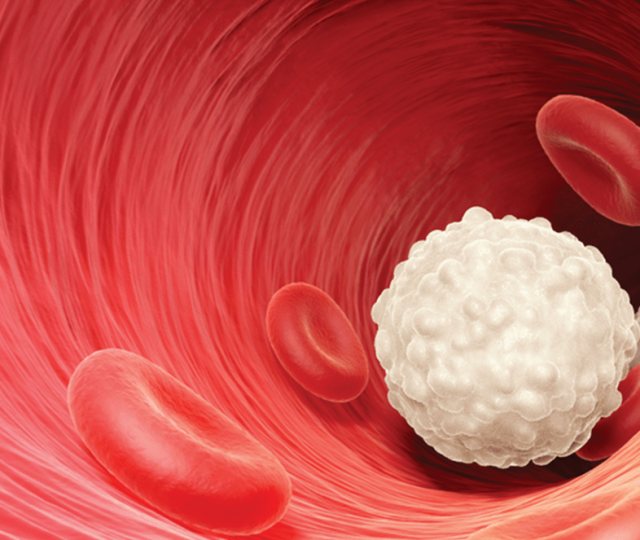
To quickly raise leukocytes in the blood, you do not need to use expensive drugs or undergo outpatient treatment. You can get by with folk remedies and significantly improve the situation even in 1 day. The main thing is to choose the right medications, adjust your diet to eliminate the problem, and take everything correctly for a certain time.
Norms of neutrophils in the blood
Normally, there are from 4 to 9 billion (× 109) leukocytes per liter of blood, or 4-9 thousand
(×103) per cubic millimeter (mm3).
Neutrophils, together with eosinophils and basophils, belong to granulocytes (polymorphonuclear leukocytes, PMN).
Norms for neutrophil content (from the total number of blood leukocytes):
- neutrophil myelocytes - 0,
- young (neutrophilic metamyelocytes) - 0 (appear in the blood only during severe infections and reflect their severity),
- stab - 1-6% (the number increases with infections),
- segmented - 47-72%. They are mature forms of neutrophils.
In absolute numbers, there should normally be 40-300 band neutrophils and 2000-5500 segmented neutrophils per 1 mm3 in the blood.
What is it and what are the blood levels?
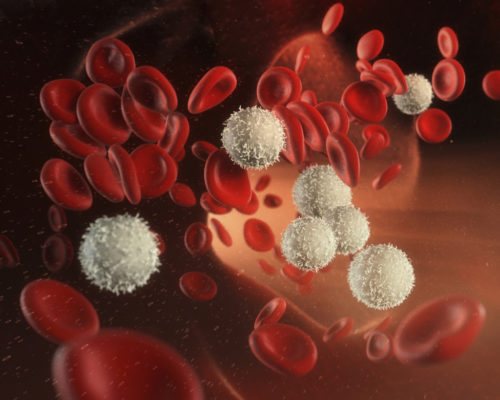
We need to understand what leukocytes are and what function they perform. Human health depends on proper hematopoiesis; any deviations pose a danger to the entire body. Cells have the following features:
- These are white blood cells that protect the body from infections, inflammation and other problems.
- With a reduced level of leukocytes in the blood, resistance to viruses and infections decreases. A person gets sick much more often and more severely.
- Cells restore tissue, constantly fight both internal and external pathogens, maintaining the normal state of the entire body.
- When pathogenic objects enter, leukocytes absorb it. Depending on the extent of the damage, symptoms of inflammation may appear, which serves as a signal that the fight against the virus is underway. This is manifested by fever, swelling, change in skin color, etc.
- Responsible for tissue regeneration. If they are deficient, recovery takes longer.
Why may white blood cells be low?
The presence and level of leukocytes in the blood is influenced by many factors. Among the main reasons for the decrease in their level are the following:
- They die. In most cases, this occurs due to the redistribution of white blood cells to fight external infections. In addition, white blood cells can be destroyed due to intoxication caused by regular ingestion of small doses of poison (including alcohol), bacterial infections, etc.
- They cease to be produced due to dysfunction of the bone marrow, which occupies a key position in the process of producing leukocytes. Leukopenia, which interferes with the normal functioning of the bone marrow, can be caused by tumors, poisoning, etc.
- They stop being produced due to a lack of nutrients - caused by a lack of copper, iron, folic acid, and B vitamins in food.
The last listed reason most often prevents the production of leukocytes in sufficient quantities. A properly selected diet will help you cope with the situation. When planning a diet, it is imperative to consult a doctor, determine possible individual intolerances of the body, and concentrate on the basic needs of the body in order to prevent a further decrease in their level.
Causes and symptoms
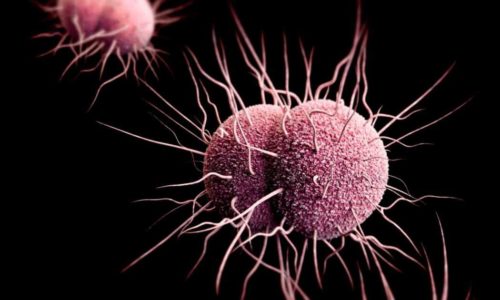
Most often, the source of the disease is inhibition of leukocyte synthesis in the body. There are many factors that negatively affect the production of white blood cells. But there are those that occur most often:
- Sexually transmitted diseases, tuberculosis, toxoplasmosis, liver cirrhosis and myelofibrosis.
- Acute shortage of substances that are used by the body in synthesis: microelements, vitamins, proteins, arachidonic acid.
- Autoimmune diseases, problems with the spleen and liver (for example: rheumatism, polyarthrosis, lupus erythematosus).
- Serious infectious diseases: influenza, brucellosis, malaria, viral hepatitis, HIV and others. Leukocytes die in large numbers and simply do not have time to be replenished. In this case, the problem is aggravated by pathogenic microorganisms in the lymph nodes, which slow down the synthesis of white blood cells.
- Taking certain groups of drugs for a long time: to regulate the functioning of the thyroid gland, anti-inflammatory and antibacterial.
- Bone marrow problems: all malignant tumors, congenital diseases, damage due to autoimmune diseases.
- Anaphylactic shock.
- The influence of drugs used in a course of chemotherapy.
- Irradiation.
Very often, the cause of a decrease in the level of leukocytes in a child is chickenpox or measles.
Sometimes it happens that during the examination no pathologies are detected. Then the problem lies in emotional, physical exhaustion or constant stress on the body. In case of violations, it is worth taking action; be sure to take the test again to monitor the changes.
It is worth noting that leukopenia most often indicates problems with the body and does not occur on its own. Impaired production of white blood cells is caused by various factors. When the level is reduced over a long period of time, immunity decreases and infectious diseases affect the body much more often.
blood restoration after chemotherapy - Biovesta
Blood restoration after chemotherapy
Most chemotherapy drugs work by slowing down or shutting down the growth and division mechanisms inside cells that tend to grow and divide too quickly. Because the blood cells produced in your bone marrow also grow quite quickly, most chemotherapy drugs can cause a short-term decrease in the number of blood cells. These drugs reduce the white blood cell count more than the red blood cell and platelet counts - although these are also the most commonly affected during treatment. Fortunately, the effect of these drugs on white blood cell counts is usually predictable and short-lived. The white cell count usually drops below normal levels about seven to ten days after chemotherapy and recovers within about a week after chemotherapy ends.
Patients are at increased risk of contracting various infections when their white cell count is below normal, so they should be advised of fever or other changes that may indicate infection during this period. Sometimes your doctor will prescribe antibiotics to help prevent a serious illness from developing.
Blood cell types and indicators
There are three main types of blood cells, each with different functions in the body.
- White blood cells called leukocytes fight infections in the body.
- Red blood cells—red cells—carry oxygen from the lungs to cells throughout the body.
- Platelets are involved in blood clotting.
Nadir (the inverse of zenith - that is, the lowest point) is a term used to describe the point after cancer treatment when blood counts are at their lowest. The nadir for each blood cell type will occur at a different time. For example, white blood cells typically reach their nadir within 7 to 14 days after the last day of chemotherapy treatment. At this moment a person is most vulnerable to infection. Over three or four weeks, your blood counts will slowly rise back to normal levels.
During cancer treatment, your doctor will perform routine blood tests to check your levels of white blood cells, red blood cells, and platelets. Sometimes a bone marrow sample may also be taken.
Low white blood cell count (neutropenia)
White blood cells help protect the body by fighting bacteria, viruses, and other foreign invaders that cause infections. One type of white blood cell, neutrophils, make up the majority of white blood cells and are the body's primary defense against infection. Neutropenia occurs as a result of abnormally low levels of neutrophils in the blood.
If your neutrophil count is low, your doctor may delay further treatment or recommend a lower dose of medication until your white blood cell count returns to normal. Antibiotics may also be prescribed as a preventative measure.
There are also certain medications or other treatments that can be used to treat neutropenia. For example, growth factors (also known as granulocyte-colony-stimulating factors or G-CSF) are used to stimulate the bone marrow to produce neutrophils.
Leukocyte count.
- Average: 4.5 - 11.0
- Low: 1.5 or lower
Low red blood cell count (anemia)
Red blood cells work with a special protein, hemoglobin, which carries oxygen throughout the body. Hemoglobin and hematocrit are tests used to evaluate red blood cells. Anemia results from a low number of red blood cells. Anemia is considered a common problem for people battling cancer, especially blood cancers such as lymphoma or leukemia. A reduced number of red blood cells means the body receives less oxygen for energy and work.
When red blood cell levels are low, the body's tissues do not receive enough oxygen to function normally, and a person may experience fatigue. If the red blood cell count becomes dangerously low, a blood transfusion may be needed to raise red blood cell levels and help restore energy.
In addition, certain medications can stimulate the production of red blood cells, such as Erythropoietin. Such growth factors are usually given by subcutaneous injection. If the cause of anemia is poor nutrition, a balanced diet and taking iron and folic acid supplements can help.
Test: hemoglobin.
- Average: 12- 16
- Low: 8 or below
Test: hematocrit.
- Average: 38-47
- Anomalous: No
Low platelet count (thrombocytopenia)
Platelets help blood clot and prevent excessive bleeding. Low platelet levels during cancer treatment may cause bleeding or bruising. Thrombocytopenia is a low level of platelets in the blood.
Fortunately, platelet levels usually return to normal after chemotherapy is completed. If the platelet count is extremely low, a blood or platelet transfusion may be recommended to restore normal levels.
Platelet count
- Average platelet count: 150-450
- Low: 30 or below.
How to restore blood after chemotherapy?
- Blood transfusions. Transfusions help people with low red blood cell and platelet counts. In a blood transfusion, the patient receives either red blood cells or platelets from donors. Although white blood cell transfusions are possible, they are reserved for special, rare situations due to the risk of complications.
- Medications. Your doctor may prescribe medications that stimulate the production of more blood cells. Medicines have their own benefits and risks, so your doctor should warn you about the possible side effects of medications used to increase your blood cell count.
- Stopping or delaying treatment. In severe cases, you may need to stop cancer treatment completely or delay it until your blood cell count improves.
The type of treatment will depend on the course of the disease and the physical condition of the patient.
What to do if the content of a certain type of blood cell is low?
- Balanced diet. The human body after chemotherapy especially needs vitamins and nutrients to restore all its functions. You should add fruits and vegetables to your diet. If complications from treatment make it difficult to eat - for example, the patient experiences nausea, vomiting, or suffers from stomatitis - mouth ulcers - you need to experiment to find a food that the body will accept.
- No injuries. Many everyday activities put a person at risk of cuts and scrapes. A low platelet count can make even minor abrasions serious. A low white blood cell count can turn a small cut into a starting point for a serious infection. It is worth using an electric razor rather than a razor to avoid cuts, cut food with care in the kitchen, carefully and carefully brush your teeth, and perform cosmetic manipulations on your skin and nails.
- No germs. It is important to avoid unnecessary exposure to germs. Wash your hands or use liquid sanitizer. Avoid sick people and stay away from crowds. Have someone else clean the litter box, bird cage, cat litter box, or fish tank. You should not eat raw meat or eggs.
If you feel tired, stop and rest. The body fights cancer cells and heals healthy cells damaged by your treatment, and the patient should not feel guilty for taking time for himself and leaving some of his work to other people.
Using Probiotics
- Probiotics - beneficial lacto- and bifidobacteria - are known to be able to influence both the general condition and the level of human immunity. Studies have shown that consuming live bacteria can help the body restore the required number of red and white blood cells.
- It is important to use live bacteria - liquid preparations such as Biovestin and Biovestin Lacto. In dry supplements, the bacteria “sleep”, they are less effective and begin to work much later after intake.
- You should consult your doctor. The fact is that probiotics can cause an increase in immunity, which, given the delicate balance in cancer treatment, can be a destructive factor.
Ways to increase leukocytes
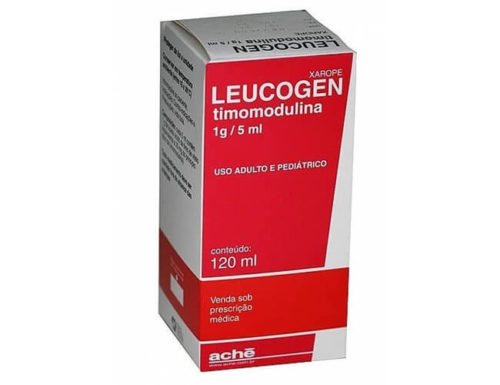
You can quickly increase white blood cells in the blood in different ways, it all depends on the age, reasons and preferences of the person. All of them are equally effective if you follow the recommendations and use them according to the system. Sometimes they combine different methods to improve performance in the shortest possible time; this is easy to do at home, an outpatient regimen is not required.
Medicines
Use medications to raise the level of leukocytes in the blood only after visiting a doctor. He will prescribe a medicine based on the causes of the problem, the person’s well-being and other factors that may have an impact. Do not self-medicate under any circumstances, so as not to cause harm to the body instead of benefit. Use the following:
- Leukogen, a drug that stimulates the production of leukocytes in the bone marrow. Available in tablet form, dosage – 20 mg. Take strictly according to the regimen prescribed by your doctor, usually the norm is 3 or 4 tablets per day. The course lasts until the indicators normalize, usually 10 days are enough. Sometimes you need to repeat the dose, but do this no earlier than 2 weeks after the first time.
- Methyluracil, a universal remedy that improves recovery processes in the body. There are different release forms: tablets, ointments and suppositories. To increase leukocytes, the tablet version is best suited. Dosage – 500 mg, frequency of administration – from 4 to 6 times per day, it is determined by the doctor based on the state of health. Should be taken immediately after meals. The duration is also determined by the situation or by test results.
- Eleutherococcus, a natural adaptogen with tonic properties. It is made in different forms: tablets, dragees, capsules, syrup or extract. The last two options should be taken half an hour before meals 2-3 times a day, after diluting in water according to the instructions from the package insert, do this for 2 to 4 weeks. As for tablets and capsules, you need 1-2 of them. twice a day with meals, the duration is prescribed individually (usually about 3 weeks).
- Leukomax, a drug that affects the entire hematopoietic system as a whole and the activity of leukopoiesis. Release form: lyophilisate for preparing a solution that is injected into a vein or subcutaneously. The drug stimulates the production of blood cell precursors, which are used in the formation of blood. The dose is prescribed by the doctor and used once a day.
- Filgrastin is a highly purified polypeptide, it contains 175 amino acids. A solution is made from it, which must be administered intravenously or subcutaneously. Administer once a day. As for the dosage, in order to increase the level of leukocytes in the blood, the doctor takes into account the characteristics of the patient’s condition and his reaction to the medicine.
You can usually return your readings to normal and stabilize your white blood cell production within 2-3 weeks. All this is done under the strict supervision of a doctor with constant testing for monitoring. Usually one drug is selected to improve performance; tablet versions are most often prescribed as they are easier to use. Solutions for intravenous or subcutaneous administration are prescribed individually.
Diet
There is a list of foods that increase leukocytes in the blood; if you correctly adjust your diet, you can achieve good results using this method. The advantage of this method is that it is not necessary to see a doctor when for some reason there is no such opportunity or it was not possible to buy the drugs. It is worth following simple tips:
- Consume more high protein foods. Seafood, different types of fish, and meat broths are suitable. Another good option is fermented milk products; there is no need to limit them, except perhaps try not to eat in the evening, so as not to disrupt the digestion processes in the stomach during sleep.
- An excellent solution for breakfast is regular buckwheat, which needs to be properly prepared. To do this, in the evening, rinse the cereal well, remove all the black grains, pour it into any container of a suitable size and fill it with kefir. In the morning it will be ready to eat.
- Eat at least 2-3 walnuts per day. They contain many unsaturated Omega fatty acids, which increase cell protection against infections and other diseases. This is very important during the period when leukocytes in the blood are low and the body is vulnerable to infections.
- Eat more fresh fruits, pomegranate is best. Also, if possible, consume red currants; they are suitable both fresh and frozen. All citrus fruits help increase the stability of cell membranes and stimulate improved blood cell production.
- Vegetables you should use are carrots and beets. It's best raw, but it can be used in different dishes. Another option is juice from these crops, it contains many useful substances.
- Red fish and its caviar have a good effect on blood formation. Try to eat these foods more often.

- Drink juices or compotes. Suitable beetroot, carrot, pomegranate, ideally squeezed immediately before use. It is advisable to dilute them.
- Use natural honey daily. Literally 2-3 spoons are enough, which should be eaten before the main meal. The second option is to take it in the evening; this is not only a product that raises white blood cells, but also a means of normalizing sleep.
- Drink at least 2 liters of clean water per day. Do not use the tap version, the liquid must be purified, if there are no good filters, it is easier to buy a ready-made version in a large container. Distribute the entire volume evenly to constantly maintain water balance. It is advisable to drink 3-4 cups of green tea.
- If possible, drink 100–150 ml of red wine every day, no more. Do this throughout the diet.
- Lard with a high fat content does not accumulate cholesterol in the body. It is advisable to eat at least 100 g of it per day, this will improve blood production and serve as additional nutrition for cells.
- Add dill to salads and hot dishes. It contains folic acid, copper and potassium. Use greens wherever possible. Use olive oil for dressing, as it improves the absorption of nutrients.
- Prepare porridge every day. Various options are suitable, but it is better to give preference to barley, oatmeal and buckwheat.
7 more important recommendations
Improving health indicators, improving health, and improving the quality of blood must be approached responsibly, comprehensively and thoroughly. It is impossible to become healthy just by drinking a glass of beer with sour cream a day. This measure is in addition to a comprehensive approach that includes:
- a healthy, balanced diet containing the full range of substances required by the body, including those for improving blood composition and the absorption of nutrients from food;
- healthy, full, sound sleep;
- consumption of sufficient amounts of clean water;
- lack of stress, calm attitude towards external stimuli;
- presence of physical activity, preferably in the fresh air;
- living in an area with a favorable environmental situation;
- giving up bad habits: smoking, overeating, eating junk food, drinking too much alcohol, etc.
Possible complications
If leukopenia is not treated, then in addition to weakened immunity and frequent illness, the consequences will be more serious. With a long-term lack of white blood cells, a number of diseases can develop. Therefore, you cannot ignore the problem and follow all the doctor’s instructions, otherwise complications may be as follows:
- Stomatitis. It appears constantly and in different places, even slight hypothermia is enough.
- Pneumonia occurs many times more often when there is a lack of leukocytes in the blood.
- Anemia is due to the fact that leukopenia provokes a decrease in the level of hemoglobin and red blood cells.
- Liver abscess - develops if the organ is affected by infection.
- Thrombocytopenia may develop due to a decrease in platelet levels.
- Aleukia - affects the bone marrow, due to which the production of white blood cells is greatly reduced or stops altogether.
- Agranulocytosis - ulcers appear and certain areas of tissue become necrotic.
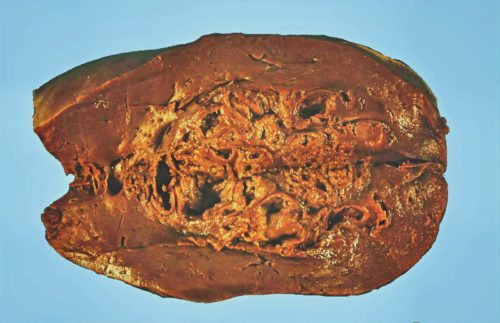
With a decrease in white blood cells, the risk of infection increases sharply. But what is even more dangerous is that the likelihood of oncology and malignant tumors increases. And as many chronic diseases worsen, complications may appear.
To increase the level of leukocytes in the blood, you can use both medications and folk remedies. It’s even easier to adjust your diet to normalize the production of white blood cells and extend their lifespan. You need to see a doctor for research, prescribing treatment, and also monitoring indicators to correct the process.
Source
Review of other methods
Often, normalizing nutrition and including essential substances in the diet is not enough to maintain white blood cell levels. In this case, depending on the individual situation and at the discretion of the treating specialist, additional measures may be prescribed:
Drug treatment
Drug treatment is carried out using various methods, using various types of drugs, and is usually used when there is a significant lack of leukocytes and an urgent need to increase their content.
The action of some drugs is aimed at stimulating the production of substances necessary for the formation of leukocytes directly in the cell, while others trigger processes in the bone marrow. Only a doctor should make a decision about the possibility and necessity of taking drugs from both groups .
Health-improving physical activity
Health-improving physical activity, including in the fresh air, is prescribed as a support for therapeutic effects, promotes better absorption of nutrients, and improves body tone.
By playing sports and saturating the body with oxygen, the body’s ability to resist diseases increases and the immune system is strengthened.
Your doctor should give specific instructions on recommended exercise, frequency and duration of physical activity.
ethnoscience
Often, to increase the number of leukocytes in the blood, they resort to traditional medicine methods.
There are certain techniques that really help normalize the level of leukocytes. However, a decision on the possibility and necessity of their use must be made only with the consent of the doctor.
They take mumiyo, honey and other bee products for medicinal purposes. In addition, the consumption of various infusions and decoctions (for example, from oats, wormwood, chamomile, etc.) can have a positive effect.
Traditional medicine methods should not be used as the only treatment , but they can be used to strengthen and maintain the therapeutic effect.
